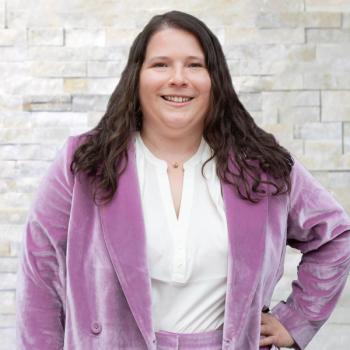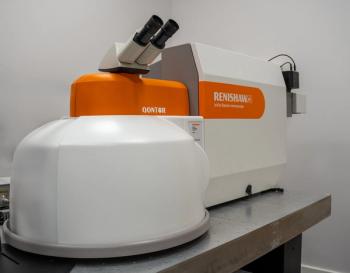
Investigating Pressure-Induced Phase Transitions in Hybrid Perovskite Using Raman Spectroscopy
A recent study reveals the pressure-induced phase transitions in imidazolium manganese-hypophosphite hybrid perovskite using Raman spectroscopy.
Imidazolium manganese-hypophosphite hybrid perovskite [IM]Mn(H2POO)3 was recently revealed to have high compressibility, and further examination of the material showed evidence of structural changes that occur under different pressure conditions (1).
A recent study conducted at the Polish Academy of Sciences in Wrocław, published in the journal Spectrochimica Acta Part A: Molecular and Biomolecular Spectroscopy, reveals the pressure-induced phase transitions in imidazolium manganese-hypophosphite hybrid perovskite, [IM]Mn(H2POO)3, using Raman spectroscopy (1).
As a hybrid perovskite material, [IM]Mn(H2POO)3 belongs to a class of crystalline compounds that possess unique structures and properties (1). These crystalline compounds are comprised of both organic and inorganic components (1). The organic component helps provide the compound good flexibility and tunability; this allows for the customization of material properties (1).
On the other side, the inorganic component of [IM]Mn(H2POO)3 also gives it its own uniqueness. The inorganic component contributes to the structural stability and desired functionalities (1). The combination of these components in a perovskite structure results in exceptional optoelectronic properties, such as high charge carrier mobility and strong light absorption, making hybrid perovskites promising candidates for various applications, including solar cells, light-emitting diodes, and sensors (1).
The researchers observed three distinct phase transitions when [IM]Mn(H2POO)3 was subjected to high-pressure experiments of up to 7.1 GPa (1). This was done using a diamond anvil cell and paraffin oil as the compression medium (1). The first transition occurred at approximately 2.9 GPa, and it exhibited significant changes in the Raman spectra (1). This indicated a large-scale reconstruction of the inorganic framework and collapse of the perovskite cages (1).
At approximately 4.9 GPa was when the second phase transition occurred (1). The researchers only witnessed small structural modifications here, unlike in the third transition, which took place around 5.9 GPa (1). The researchers noted that the final transition resulted in further distortion of the anionic framework (1). What was unexpected was that the imidazolium cation showed little impact during the phase transitions as they were taking place (1). The pressure dependence of Raman modes revealed that the compressibility of the high-pressure phases was notably lower compared to the ambient pressure phase (1).
This study revealed several important takeaway points. It highlighted the prevailing contraction of the MnO6 octahedra over the imidazolium cations and hypophosphite linkers, but it also showed that in the highest-pressure phase, the compressibility of MnO6 experienced a significant decrease (1). Another important point the researchers took away from the experiment was that all pressure-induced phase transitions were found to be reversible (1).
Understanding the behavior of hybrid perovskite materials is crucial for their potential applications in various fields, including electronics and energy conversion (1). The findings from this Raman spectroscopy study provide valuable insights into the material's response to pressure, contributing to the development of novel materials and the advancement of scientific knowledge in the field of perovskite research (1).
Reference
(1) Mączka, M.; Vasconcelos, M.; Freire, P. T. C. Raman study of pressure-induced phase transitions in imidazolium manganese-hypophosphite hybrid perovskite. Spectrochimica Acta Part A: Mol. Biomol. Spectrosc. 2023, 298, 122768. DOI:
Newsletter
Get essential updates on the latest spectroscopy technologies, regulatory standards, and best practices—subscribe today to Spectroscopy.



